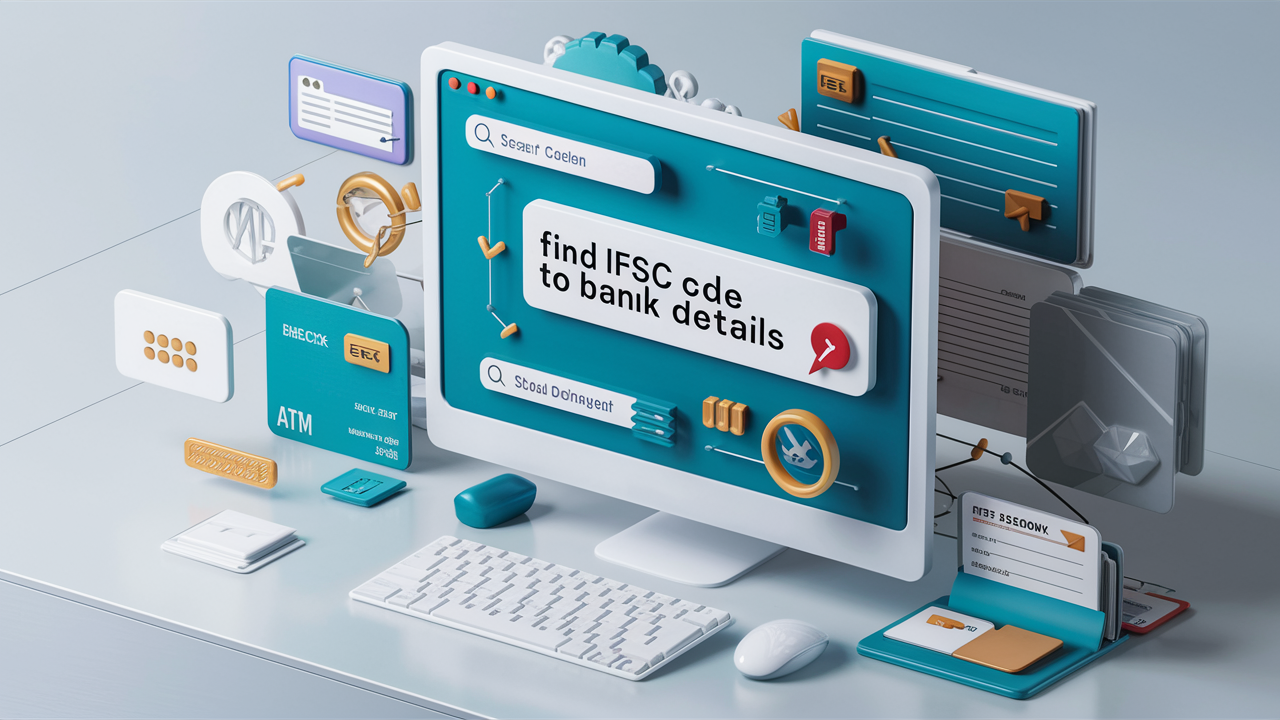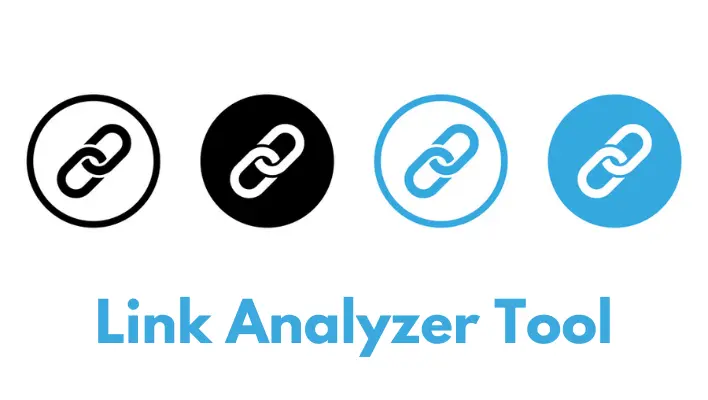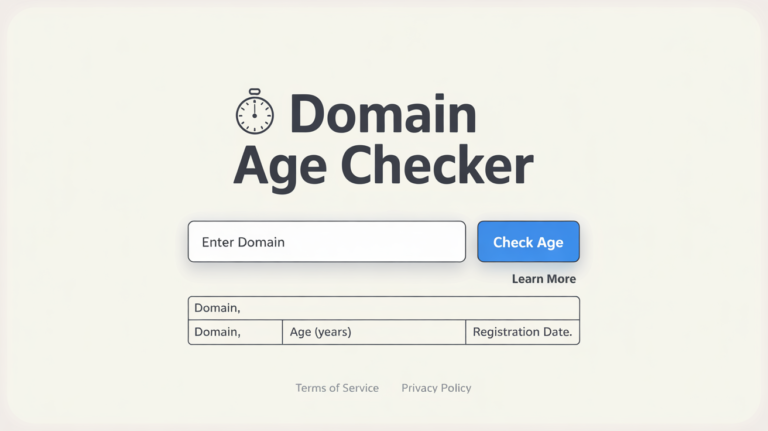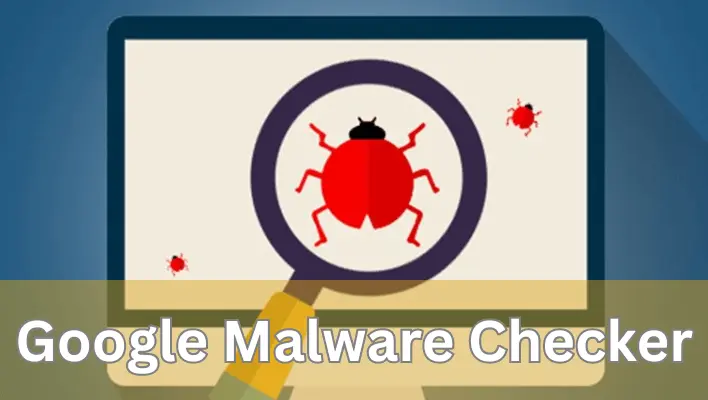Find IFSC Code to Bank Details Quickly: Bank Branch Details with Our IFSC Code Finder Tool
Ever wondered, “What exactly is an IFSC code and why do I need it?”
An IFSC code (Indian Financial System Code) is that crucial little string of letters and numbers you’ll need when making bank transfers in India. Whether you’re sending money via NEFT, RTGS, or IMPS, the IFSC code ensures your payment lands at the correct branch without any hassle. Without it, your transactions are likely to fail, and nobody wants that!
In this guide, we’ll walk you through how to easily find the IFSC code for your bank, how to use it for quick fund transfers, and why you should care about getting it right. Stick around – it’s more important than you might think.
What Exactly is an IFSC Code?
The IFSC code is like a bank’s digital address. It’s a unique 11-character code used to identify a specific bank branch when transferring money electronically. Here’s how it breaks down:
- The first 4 characters are the bank code.
- The next 6 digits are the branch code.
- The last character is typically “0”, reserved for future use.
For instance, if you look at the IFSC code SBIN0001234, you can break it down like this:
- SBIN = State Bank of India (bank code)
- 0001234 = Branch code for a specific location.
- The “0” at the end doesn’t really matter for now.
Why Do You Need an IFSC Code?
Whenever you’re making an online transaction in India, you’ll need to use the IFSC code. Whether it’s a NEFT, RTGS, or IMPS transfer, the IFSC code ensures that the money goes to the right bank branch. Without it, your transaction might fail, or worse, end up in the wrong hands. So, yeah, it’s kind of a big deal!
Think of it like this: when you’re sending a letter, the IFSC code is the address. Get the address wrong, and your letter (or in this case, your money) won’t reach its destination.
How to Find Your Bank’s IFSC Code
Okay, so now that we know how important the IFSC code is, how do you actually find it? Don’t worry, it’s pretty straightforward.
1. Use an IFSC Code Finder Tool
The fastest and easiest way to get your IFSC code is by using an online IFSC code finder tool. These tools allow you to search by bank name, branch name, or even location. Some reliable ones include:
- CodeForBanks: Type in the name of your bank and branch, and voilà – it’ll show you the IFSC code in no time.
- RBI Official Website: Yes, even the Reserve Bank of India has a tool for finding IFSC codes. Super official, super trustworthy.
2. Check Your Bank’s Documents
If you have a cheque book or passbook handy, you can easily find the IFSC code printed there. It’s usually printed next to your account number, so no need to open your laptop for this one.
3. Call Customer Service
If you’re really in a bind and can’t find it online, just call your bank’s customer service. They’ll be happy to provide the IFSC code of any branch.
Finding Bank Branch Details by IFSC Code
You can also use the IFSC code to find more than just the code itself. If you’re wondering about the address, contact details, or even the branch manager’s name (okay, maybe not the manager’s name, but you get the idea), the IFSC code can help you track all of that down.
Here’s a sample of what you could find with an IFSC code search:
| Bank Name | IFSC Code | Branch Name | Location | Phone Number |
|---|---|---|---|---|
| State Bank of India | SBIN0001234 | Mumbai Main Branch | Mumbai, Maharashtra | 022-12345678 |
| HDFC Bank | HDFC0001234 | New Delhi Branch | New Delhi, Delhi | 011-23456789 |
| ICICI Bank | ICIC0001234 | Bangalore Branch | Bangalore, Karnataka | 080-98765432 |
Pretty neat, right? A quick IFSC code lookup can provide you with everything you need to ensure your transaction is on point.
Common Issues When Using IFSC Codes
Here are a couple of things to keep in mind when using IFSC codes to make your bank transfers smoother:
1. Incorrect IFSC Code
A simple typo can ruin your entire transfer. If you use the wrong IFSC code, the transaction might fail or, worse, get sent to the wrong branch. So double-check before you hit that “Send” button!
2. Outdated IFSC Codes
Sometimes, banks change their IFSC codes, especially when branches merge or relocate. If you’ve had the same IFSC code for a while, it’s a good idea to check for updates. Many online tools have the most current codes, but always verify.
3. Non-Availability of IFSC Code
While rare, there might be some branches that don’t have an IFSC code listed. In such cases, it’s best to directly contact your bank.
MICR Code vs IFSC Code: What’s the Difference?
Okay, so we’ve been talking a lot about IFSC codes, but have you ever heard of the MICR code? It’s another important code used in banking, but it’s meant for cheque clearing, not electronic transfers.
| Aspect | IFSC Code | MICR Code |
|---|---|---|
| Used for | NEFT, RTGS, IMPS, online banking | Processing physical cheques |
| Format | 11 characters (alphanumeric) | 9 digits (numeric) |
| Location | Online, bank documents | Printed on the bottom of cheques |
While the MICR code is important for cheque-based transactions, it doesn’t help with NEFT, RTGS, or IMPS payments, where IFSC codes come into play. So, when you’re doing an online transaction, remember: IFSC code = good; MICR code = not necessary.
Can You Use IFSC Codes for International Transfers?
Nope. For international transfers, you’ll need a SWIFT code (Society for Worldwide Interbank Financial Telecommunication). While the IFSC code is only used for domestic transactions within India, SWIFT codes are used globally to facilitate international money transfers.
Conclusion
So there you have it – everything you need to know about IFSC codes and why they matter for secure bank transfers. Whether you’re sending money via NEFT, RTGS, or IMPS, using the right IFSC code is essential for ensuring your money gets to the right place. Luckily, with online IFSC code finder tools, you can easily track down your bank’s IFSC code and branch details in just a few clicks.
So, next time you need to make a transfer, be sure you’ve got the correct IFSC code – it’s the key to a smooth and safe transaction!
FAQs
How do I find my bank’s IFSC code?
Use an IFSC code finder tool, check your cheque book, or call customer service. Simple as that!
What happens if I use the wrong IFSC code?
If you use an incorrect IFSC code, your transfer will either fail or go to the wrong branch. Always double-check before confirming.
Is the IFSC code the same for every branch?
Nope! Each branch has its own unique IFSC code. Make sure you use the right one for the correct branch.



















